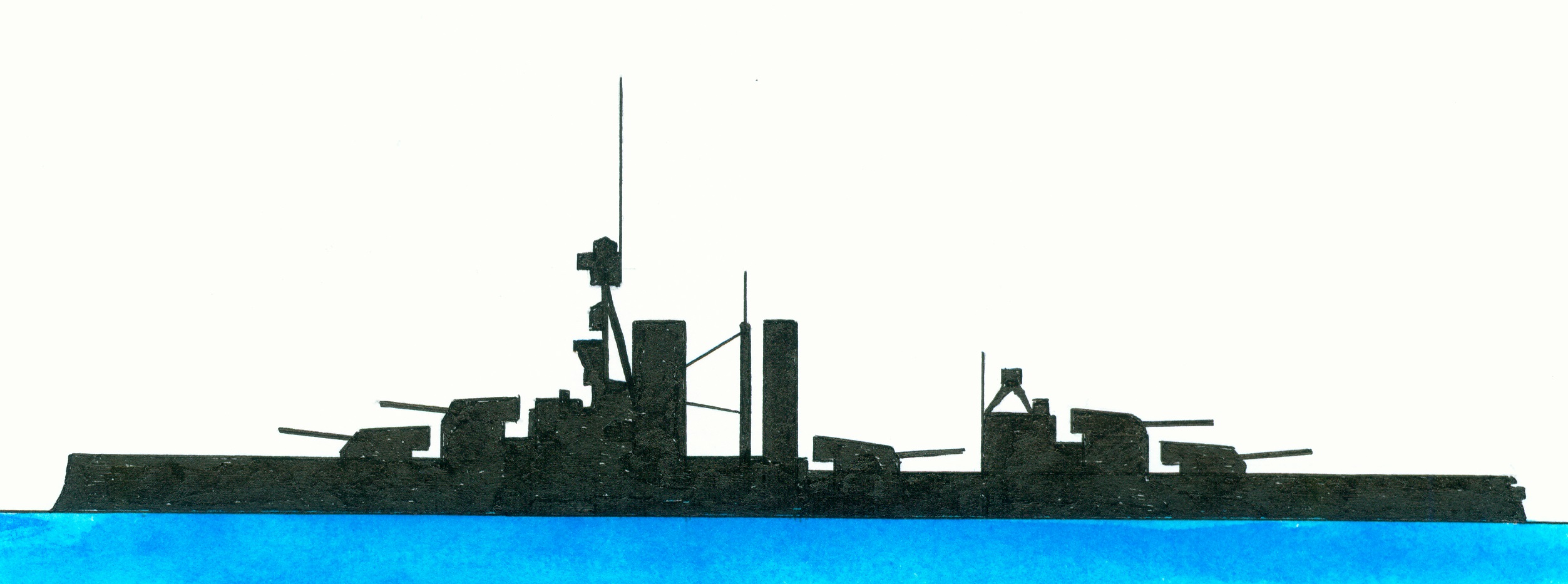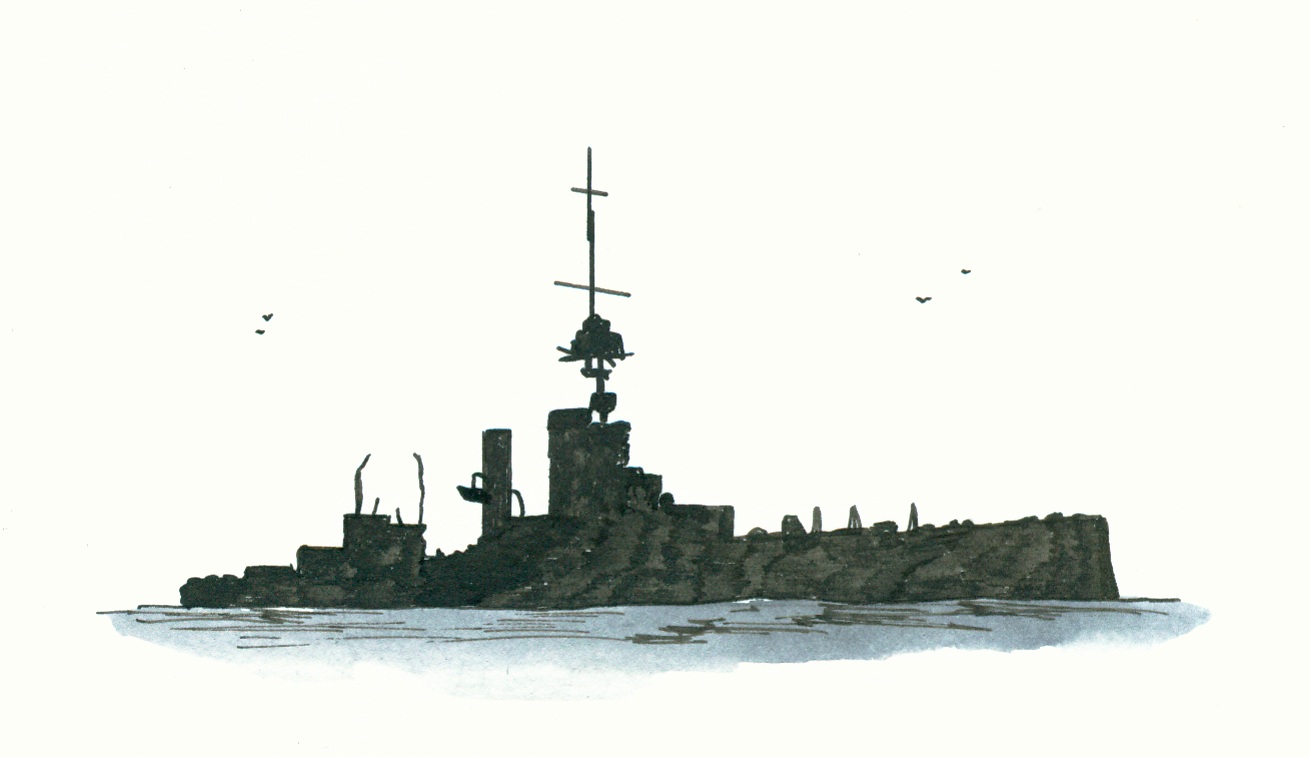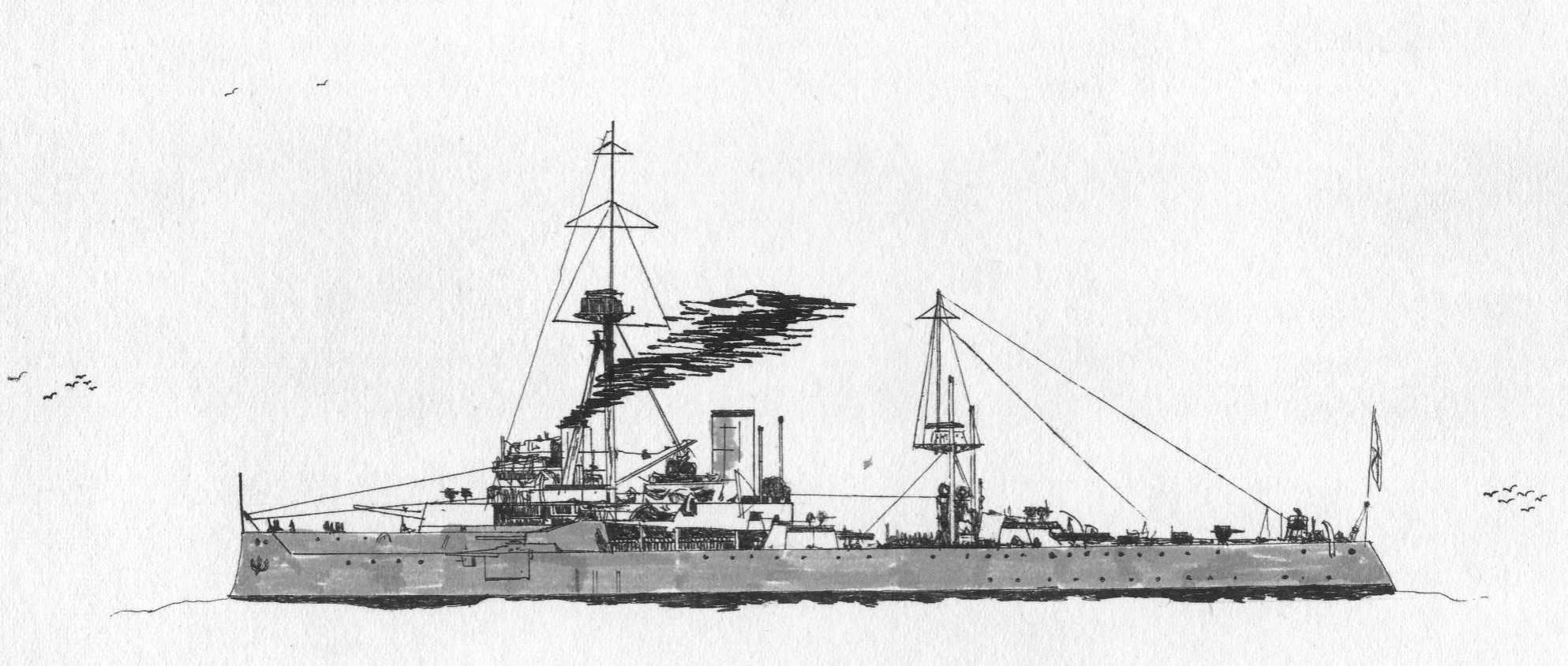King George V-class
HMS Centurion
Colossus-class
HMS Dreadnought
Lord Nelson-class
Notes
1. Part of the King George V-class consisting of the King George V (ex-Royal George), Audacious, Centurion and Ajax, preceded by the Orion-class and succeeded by the Iron Duke-class. Laid down at the navy yard Portsmouth, England on 16 January 1911, launched in 18 November 1911, completed in May 1913, converted into a target ship in 1924, ideas to used her as block ship in the harbour of Tripoli, Libya declined in April 1941, converted with a false superstructure into a decoy for the HMS Anson in April 1941-1942 and finally sunk as a breakwater off Normandy in June 1944.
2. Part of the King George V-class consisting of the King George V (ex-Royal George), Audacious, Centurion and Ajax, preceded by the Orion-class and succeeded by the Iron Duke-class. Ordered under the 1910 construction program. Laid down by Scotts Shipbuilding and Engineering Company, Greenock, Scotland on 27 February 1911, launched on 21 March 1912, completed on 31 October 1913, decommissioned in 1924, part of the reserve at Devonport and sold to the Alloa Shipbreaking Company be broken up on 10 December 1926 which started at Rosyth, Scotland from 14 December 1926 on.
3. Part of the King George V-class consisting of the King George V (ex-Royal George), Audacious, Centurion and Ajax, preceded by the Orion-class and succeeded by the Iron Duke-class. Laid down at Cammell Laird along the River Mersey, England in March 1911, launched on 14 September 1912, completed in August 1913 and sunk after striking a mine laid by the German auxiliary minelayer Berlin off Tory |Island, Ireland on 27 October 1914.
4. Part of the Colossus-class consisting of the Colossus and the Hercules, preceded by the Neptune-class and succeeded by the Orion-class. Laid down at Palmers, Jarrow, England on 30 July 1909, launched on 10 May 1910, commissioned on 31 July 1911, part of the reserve since February 1919, sold to a German shipbreaker on 8 November 1921 and broken up at Kiel, Germany in 1922.
5. Her keel was laid down at the HM Dockyard at Portsmouth on 2 October 1905, launched on 2 December a year later, commissioned on 2 December, decommissioned in 1919 and broken up in 1923.
6. Building ordered in 1904. Laid down by the William Beardmore and Company’s Daimuir Naval Construction Works, Daimuir, Scotland on 15 May 1905, launched on 23 June 1906, completed on June 1908, commissioned on 25 June 1908, decommissioned on 20 March 1909, converted into a target ship at the Chatham Dockyard between 6 December 1920-8 April 1921, radio-controlled target ships between 1923-1926 and the replaced by HMS Centurion and finally sold to J. Cashmore, Newport, England to be broken up on 24 January 1927. On 1 March she left the Portsmouth Dockyard to her final destination at Newport. Her building was seriously delayed caused by problems with the shipyard personnel and using her guns for the HMS Dreadnought .Building costs 1.652.346 pound sterling. Of the Lord Nelson-class consisting of the Lord Nelson and the Agamemnon which were the last pre-dreadnoughts. Preceded by the Swiftsure-class and succeeded by the Dreadnought. Designed by Sir Philip Watts.
7. Of the Lord-Nelson-class. Laid down at the shipyard of Palmers Shipbuilding and Iron Company, Jarrow, England on 18 May 1905, launched on 4 September 1906, completed in October 1908, commissioned on 1 December 1907m decommissioned in May 1919 and sold to be broken up to Stanlee Shipbreaking Company, Dover, England on 4 June 1920, resold to Slough Trading Company on 8 November 1920 and then resold to Germany and towed towards to be broken up in January 1922. Of the Lord Nelson-class consisting of the Lord Nelson and the Agamemnon which were the last pre-dreadnoughts. Preceded by the Swiftsure-class and succeeded by the Dreadnought. Designed by Sir Philip Watts.





